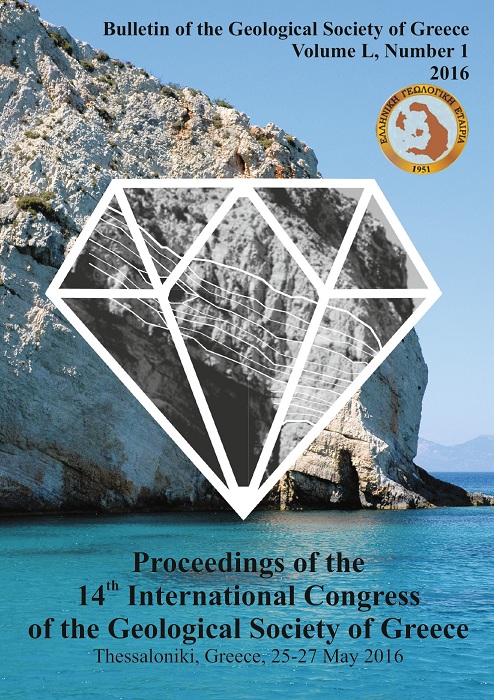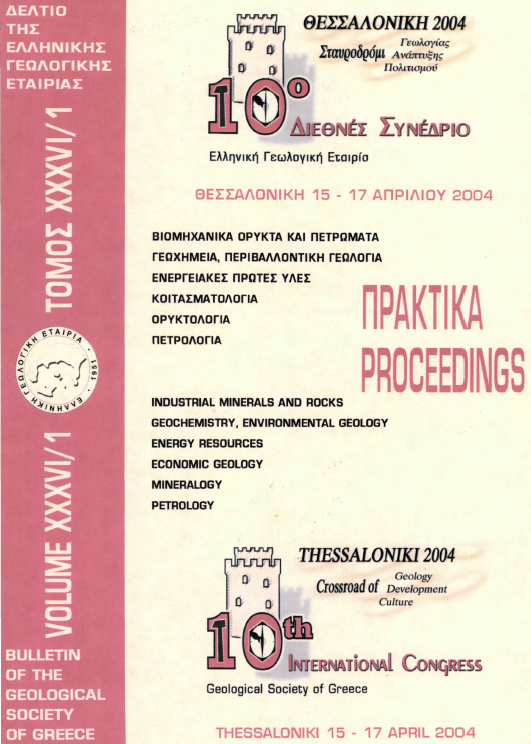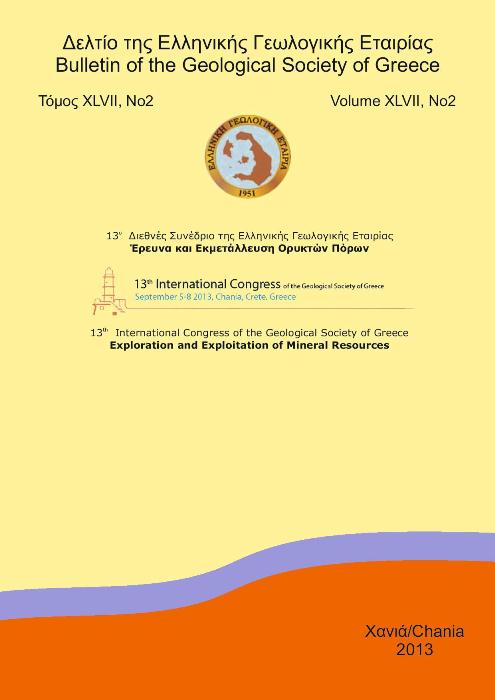A CARBONATE RAMP EVOLUTION IN THE TRANSITION FROM THE APULIA PLATFORM TO THE IONIAN BASIN DURING EARLY TO LATE CRETACEOUS (NW GREECE)

Περίληψη
Μικροφασική ανάλυση των Κρητιδικής ηλικίας ανθρακικών ακολουθιών της εξωτερική και κεντρικής Ιονίου ζώνης ανέδειξε την ύπαρξη ενός περιβάλλοντος ράμπας ήπιας κλίσης. Κατά τη διάρκεια του Βερριασίου- Βαλανζινίου η ανθρακική ράμπα ήταν επιμέρους διαφοροποιημένη σε εσωτερική, μεσαία και εξωτερική. Η εσωτερική ράμπα αντιστοιχούσε στην Προ-Απούλια ζώνη, η μεσαία ράμπα στην εξωτερική Ιόνια ζώνη και η εξωτερική ράμπα στην κεντρική Ιόνια ζώνη. Η εξωτερική Ιόνια ζώνη χαρακτηρίζεται από αποθέσεις mudstones-wackestones με θραύσματα εχινοδέρμων, δίθυρων, ακτινόζωων και σπάνια aptychus. Η απόθεση των έλαβε χώρα κάτω από τη ζώνη μόνιμου κυματισμού (FWWB). Κατά τόπους εντοπίζονται αποθέσεις κυμάτων καταιγίδας οι οποίες υποδεικνύουν απόθεση πάνω από τη συγκεκριμένη ζώνη (SWB). Μικρές εμφανίσεις packstones-grainstones με θραύσματα εχινοδέρμων, ασβεστολιθικών φυκιών, tubiphytes, lagenid, τρηματοφόρα και σπάνια ωοειδή αποτέθηκαν στο κατώτερο τμήμα της εσωτερικής ράμπας, κοντά στη ζώνη του μόνιμου κυματισμού (FWWB). Η κεντρική Ιόνια ζώνη χαρακτηρίζεται από muds tones-wackes tones πλούσια σε ακτινόζωα και σπάνια calpionellids και calcispheres τα οποία αποτέθηκαν κάτω από την ζώνη δράσης κυμάτων καταιγίδας (SWB). Σε κανένα τμήμα των μελετηθέντων αποθέσεων δεν εντοπίστηκαν αποθέσεις κροκαλοπαγών και θραυσμάτων πετρωμάτων. Κατά τη διάρκεια του Ωτεριβιου-Τουρωνίου συνεχής άνοδος της θαλάσσιας στάθμης οδήγησε στη δημιουργία περιβάλλοντος εξωτερικής ράμπας στην εξωτερική Ιόνια ζώνη καθώς και εξωτερικής ράμπας/λεκάνης στην κεντρική Ιόνια ζώνη. Η μετάβαση από ρηχές σε βαθύτερες συνθήκες χαρακτηρίζεται από την απόθεση mudstones-wackestones με ακτινόζωα.
Λεπτομέρειες άρθρου
- Πώς να δημιουργήσετε Αναφορές
-
Getsos, K., Pomoni-Papaioannou, F., & Zelilidis, A. (2007). A CARBONATE RAMP EVOLUTION IN THE TRANSITION FROM THE APULIA PLATFORM TO THE IONIAN BASIN DURING EARLY TO LATE CRETACEOUS (NW GREECE). Δελτίο της Ελληνικής Γεωλογικής Εταιρείας, 40(1), 53–63. https://doi.org/10.12681/bgsg.16335
- Ενότητα
- Παλαιοντολογία, Στρωματογραφία και Ιζηματολογία

Αυτή η εργασία είναι αδειοδοτημένη υπό το CC Αναφορά Δημιουργού – Μη Εμπορική Χρήση 4.0.
Οι συγγραφείς θα πρέπει να είναι σύμφωνοι με τα παρακάτω: Οι συγγραφείς των άρθρων που δημοσιεύονται στο περιοδικό διατηρούν τα δικαιώματα πνευματικής ιδιοκτησίας επί των άρθρων τους, δίνοντας στο περιοδικό το δικαίωμα της πρώτης δημοσίευσης. Άρθρα που δημοσιεύονται στο περιοδικό διατίθενται με άδεια Creative Commons 4.0 Non Commercial και σύμφωνα με την οποία μπορούν να χρησιμοποιούνται ελεύθερα, με αναφορά στο/στη συγγραφέα και στην πρώτη δημοσίευση για μη κερδοσκοπικούς σκοπούς. Οι συγγραφείς μπορούν να: Μοιραστούν — αντιγράψουν και αναδιανέμουν το υλικό με κάθε μέσο και τρόπο, Προσαρμόσουν — αναμείξουν, τροποποιήσουν και δημιουργήσουν πάνω στο υλικό.







